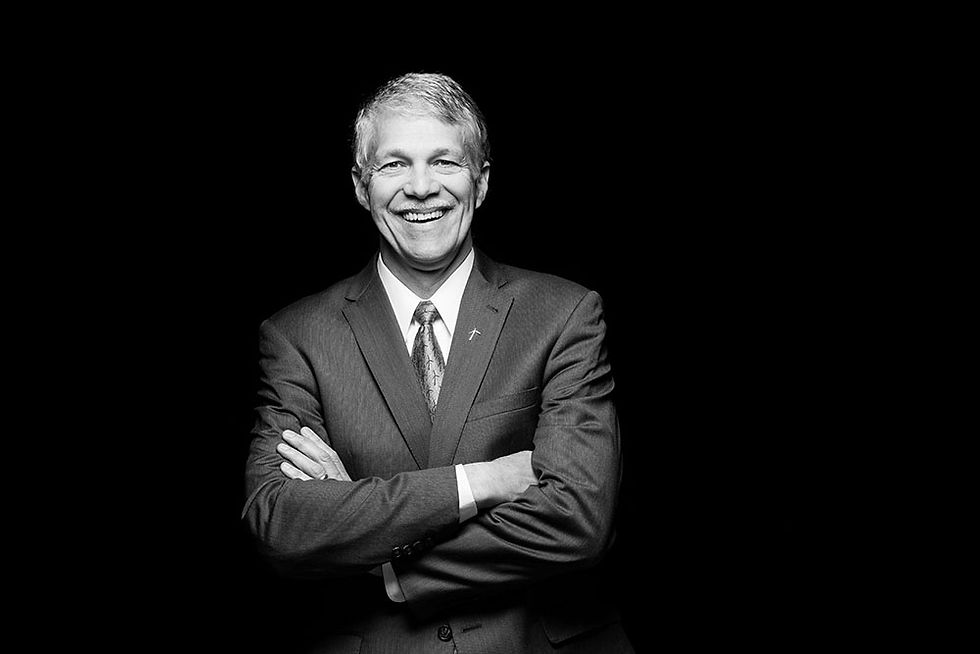The Common Sense Colloquy: Q&A with Tom Kiernan of AWEA
- Ben Finzel
- Dec 16, 2020
- 4 min read
Updated: Jan 28, 2021
Renewable energy is one of the success stories of this century: wind and solar have grown exponentially (from a fraction of a percent of the nation’s electricity to more than 10% in 20 years) and they have the media coverage, legislative accomplishments and industry growth to prove it. I’m always happy to talk with leaders from the industry, particularly at points when they are even more relevant to the national conversation. So I’m thrilled this month to have the opportunity to include outgoing AWEA CEO Tom Kiernan in the Common Sense Colloquy series.
Tom is the last CEO of AWEA. As of January 1, 2020, AWEA will become the American Clean Power Association (ACP). ACP will be an even larger organization focused not just on wind power, but on solar and storage as well.
Under Tom’s leadership, AWEA has grown from an almost-mature technology on the cusp of another breakthrough to a driving force of the energy economy which provides more than 6% of all of the nation’s electric generation. AWEA and the wind industry as a whole has been fortunate to have the benefit of Tom’s leadership under which the industry grew to become the number one renewable energy source in America. Before joining AWEA in May of 2013, Tom served as the President of another organization we hold in high esteem, the National Parks Conservation Association (NPCA).
A native of Arlington, VA, Tom’s career has been centered in Washington, D.C. Before NPCA, Tom was Deputy Assistant Administrator of the EPA’s Office of Air and Radiation (where he helped lead the implementation of the 1990 Clean Air Act Amendments), President of the Audubon Society of New Hampshire and a senior consultant for Arthur Anderson & Co. To say he has a well-rounded resume of energy and environmental leadership would be an understatement!
I’ve had the pleasure and the privilege of working with Tom every February for the last few years on the rollout of the Sustainable Energy in America Factbook, a project of RENEWPR client Business Council for Sustainable Energy and BloombergNEF. I’ve always been impressed with Tom’s ability to be smart, succinct, and compelling. I’m thrilled to have the opportunity to include him in the Common Sense Colloquy series.
[Sidebar: I worked with AWEA as an outside consultant for nearly six years when I was an executive at FleishmanHillard at the start of the century (well before Tom’s tenure). I’ve been a fan of AWEA ever since and am thrilled to have the opportunity to spotlight the organization here before it becomes something new.]
My thanks to Tom for sharing his wisdom with us – and you.
Q: So the obvious first question is what’s next for you as AWEA becomes ACP and new leadership steps in? Is leading AWEA a tough act to follow given your many contributions to the growth and success of the wind energy industry in the United States?
A: I don’t know what’s next – and that too is exciting! It has been a very fulfilling seven years with AWEA and I am proud of what the industry has accomplished in this challenging period. Given my personal passion for clean energy and conservation, I plan to stay involved in clean energy and conservation mission-driven work. So, yes, it will be tough to find a job as meaningful as AWEA, but I am committed to continuing my strategy of only considering positions that are truly motivating and inspirational for me.
Q: How do you view the policy landscape for renewable energy in the coming year? Conventional wisdom seems to be that a divided Congress and a Democratic President mean only those policies that are truly bipartisan and popular across the board have a chance of being enacted. Wind energy is generally viewed that way so should we assume you’re feeling good about the potential for wind and other renewables in the year ahead?
A: Renewable energy is undeniably growing and critically important to the world. As well, we are increasingly bipartisan given the geographic range of jobs that we are creating and are also increasingly economic as our productivity has skyrocketed. So, we should have strong policy support in the coming years despite a divided Congress (if that is where we end-up) and because of the cost effectiveness of our policy support. However, I only see a glimmer of hope for a sweeping legislative approach to addressing climate change.
Q: Your career has included leadership of significant energy and environmental organizations in both the public and private sector. How have these experiences shaped your work and the ways you have communicated about it?
A: I have learned that leading energy and conservation organizations is a deeply personal experience. Effective leaders need to lead from their head and their heart – sharing, communicating, and demonstrating the personal beliefs and values of the work if you want to inspire staff, donors, and volunteers. So, while leaders need to communicate strategies and information, they must also be genuine and personally meaningful in how they communicate to be most effective.
Q: What’s the best “common sense” advice about communications you’ve received?
A: No matter the size of the audience, pick a few people that you directly speak to. Look at and talk to them, doing so helps you get comfortable and makes your remarks relatable.
Q: What’s the best “common sense” advice about communications you've given to others?
A: Preparation and Practice! When I started leading groups of people, I know I was a horrible communicator. I was nervous, unclear, and ineffective. But I learned that practice may not make perfect, but it sure makes better. So, after a lifetime of preparation and practice by rehearsing remarks, rewriting speeches, asking advice from friends and experts, you can get a lot better.





















Comments